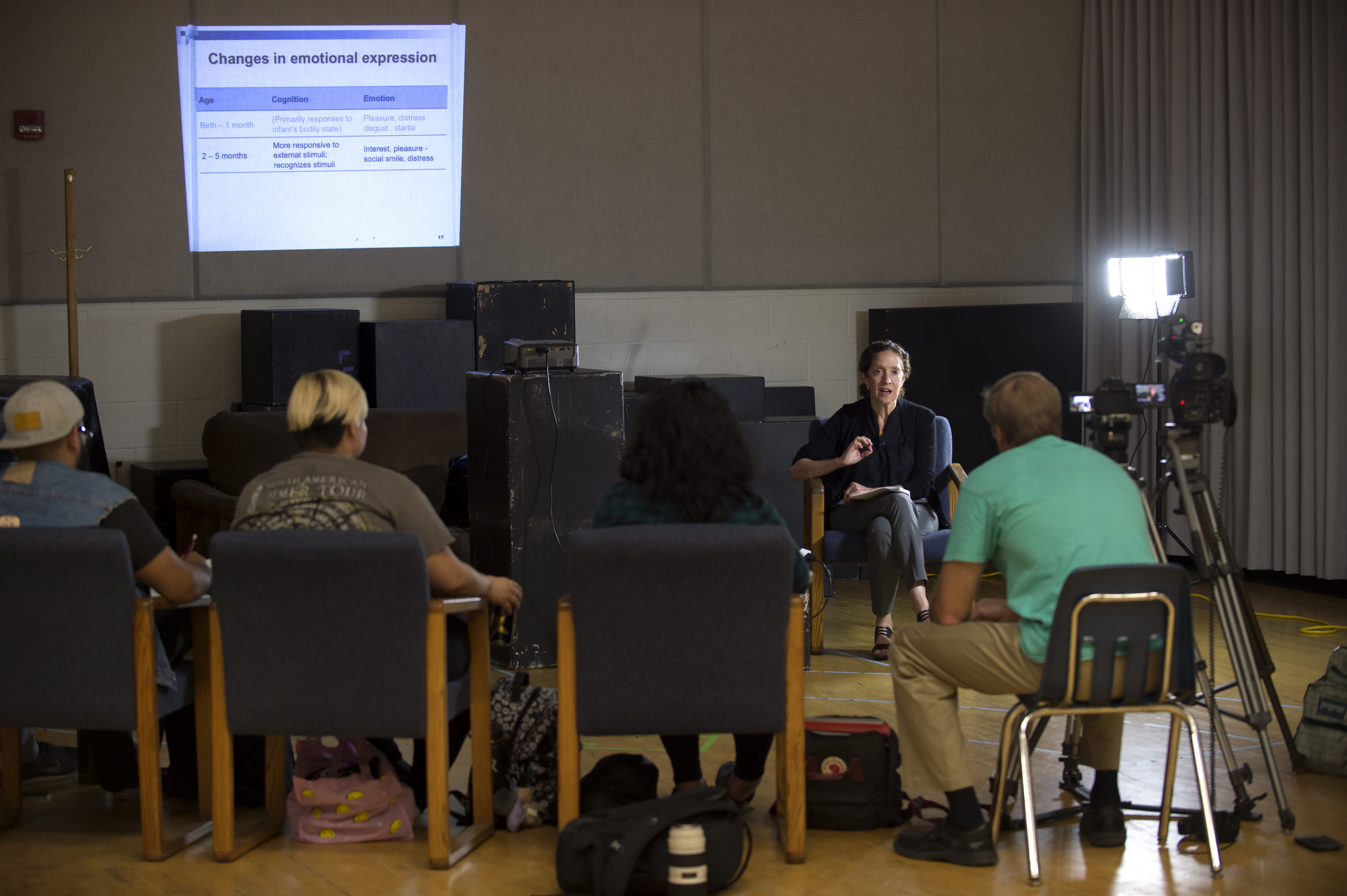Scientific method acting
Cross-disciplinary course explores role of neurobiology in performing arts

There is a recipe for sorrow: Draw a long breath, followed by two quick, choppy ones. Let your head hang to your chest. Furrow your brow, let the corners of your mouth droop and – by thinking of something tragic, real or fabricated – allow the tears to well up and flow.
There are formulas for feigning joy, fury and confusion too, says David Ihrig, UCI drama lecturer and emotion expert, who is teaching a cross-disciplinary course this quarter on the science of acting. His technique is all about using cognitive and behavioral science to infuse onstage characters with genuine memories, feelings and personalities, bringing a new level of realism to the performing arts.
“It’s not acting; it’s being. It’s learning from scientists how to manipulate the mind so that, as actors, we are actually experiencing things onstage, not just pretending, which used to be the standard,” Ihrig says. “This could become the next model for the way acting is taught.”
The class features weekly lectures by faculty fellows of UCI’s Center for the Neurobiology of Learning & Memory, including world-class neuroscientists James McGaugh, Gregory Hickok and Elizabeth Loftus. They address topics such as how to efficiently “create” memories for characters, how characters would realistically respond to onstage stimuli based on these memories and how to manipulate emotions physiologically – for instance, hanging the head and starting to cry.
McGaugh, who minored in drama in college, has studied the neurobiology of learning and memory for more than 60 years. He compares Ihrig’s technique to absorbing the meaning of a song before singing the words – it enriches the experience for both singer and audience.
“If I was an actor, this is how I would do it,” McGaugh tells the class of 12 advanced students during a lecture. “I would generate an autobiography for my character, create memories and a personality, and fashion for him a rich world much like my own. You then have a narrative for your character that goes well beyond the lines in a script.”

The students put the advice into practice, doing exercises each week designed to apply neurological principles to characters onstage and “reverse-engineer human behavior,” as Ihrig puts it. They spout monologues at each other, craft perfect facial expressions and come up with plausible memories for their dramatic personas. At the end of the course, as a final exam, the students will write and act their own roles, animated with memories and emotions they have invented, in hopes that their performances will exhibit greater depth and honesty.
According to Michael Yassa, director of the Center for the Neurobiology of Learning & Memory, Ihrig’s class is the first of many partnerships between CNLM and the arts at UCI, including proposed conferences on the neuroscience of music and dance.
“Collaborations like this make us broad and take us beyond the ivory tower of how science is usually done, or of what constitutes art,” Yassa says. “There are so many opportunities for these disciplines to benefit each other that just haven’t yet been explored.”
Besides using cognitive science to supplement the arts, Ihrig notes, studying acting – how memories and emotions are performed – can inform other fields.
“There are ways to quantify feelings – by using heat sensors or measuring levels of adrenaline and other chemicals in the body,” he says. “We can use the information we’re gleaning on how these internal sensations manifest in certain situations and apply it to criminology, psychology and cognitive science, for example.”
Yassa concurs: “Neuroscientists have much to gain from actors in terms of seeing in practice the mechanisms for how we learn and remember information. The cross-disciplinary benefit of this course, and future collaborations between science and the arts, is twofold.”
As for Ihrig, he’s happy with the results.
“This technique has cut the learning curve of my students in half, and the performances that we’ve already gotten out of this class have been phenomenal,” he says. “The method has exceeded all expectations. It’s really the beginning of a trend.”